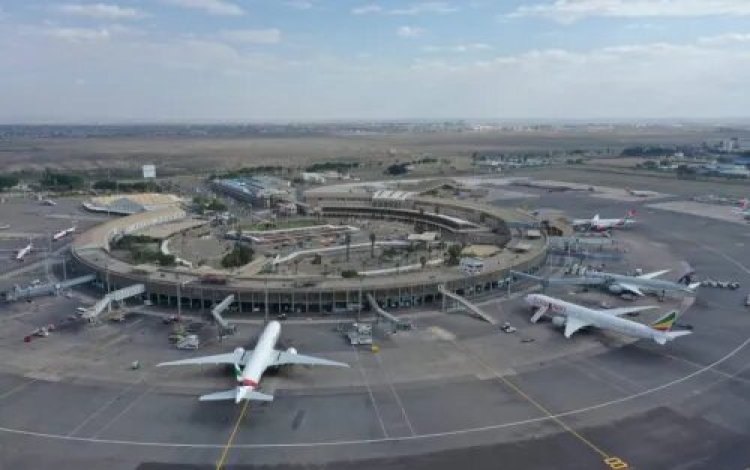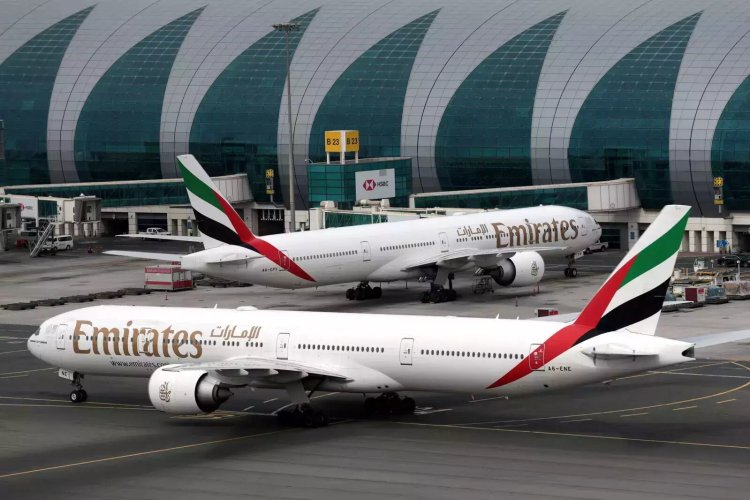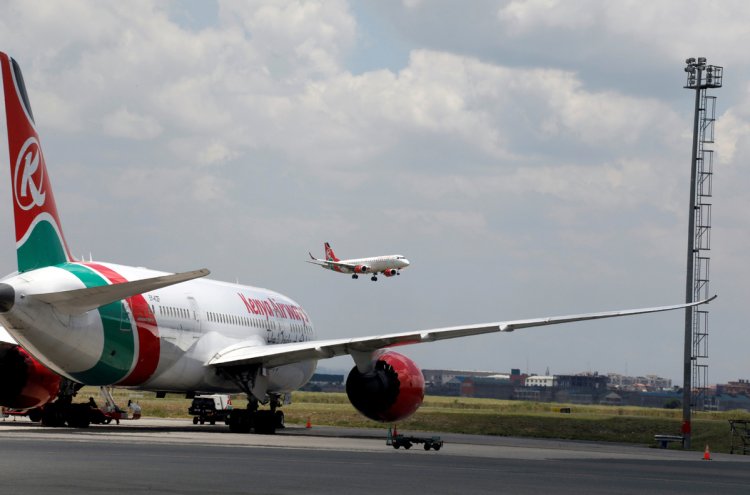How Plane With Over 400 Passengers From Nairobi Was Saved From Mid-Air Collision
This was reported on Wednesday, March 27 by the Somaliland Civil Aviation and Airports Authority (SCAAA), the occurrence coming a month after two other aircraft nearly collided in the same airspace

A passenger plane which departed Jomo Kenyatta International Airport (JKIA) in Nairobi on Sunday, March 24 narrowly avoided a mid-air collision with another passenger plane while flying over Somaliland.
This was reported on Wednesday, March 27 by the Somaliland Civil Aviation and Airports Authority (SCAAA), the occurrence coming a month after two other aircraft nearly collided in the same airspace, adding to the growing concerns about safety and air traffic control competency in the region.
The incident involved the passenger aircraft, an Emirates Airline Boeing 777 which departed JKIA for Dubai in the United Arab Emirates (UAE) on March 24 and another, an Ethiopian Airlines Boeing 737 MAX which was flying from Ethiopia's Addis Ababa to Bangalore in India.
SCAAA had revealed that the two aircraft almost collided at 12:43 am local time while flying at 37,000 feet, having reportedly received conflicting instructions from air traffic controllers in Mogadishu, the capital of Somalia.

Emirates aircraft at Dubai International Airport. /FILE
As observed on flight tracking platform FlightRadar24, the 777 with more than 400 passengers and the 737 were approaching an intersection while flying at the same level, a matter which alerted controllers in Mogadishu to intervene.
The SCAAA's report suggested that both flights had been directed to converge at the same time and location. However, Somaliland air traffic controllers intervened and collaborated with the Ethiopian flight crew to avoid disaster.
The Ethiopian pilots eventually ascended to 39,000 ft and maintained safe separation.
"Thanks to the quick thinking and decisive actions of Somaliland Air Traffic Controllers, in collaboration with the pilot of Ethiopian Airlines, catastrophe was averted as the ETH690 pilot swiftly ascended to 39,000 ft, mere moments before disaster could have struck," stated SCAAA in part.
"This incident serves as a stark reminder of the critical importance of proficient air traffic control operations. It is deeply concerning that air traffic controllers in Mogadishu are recurrently making errors of this magnitude, posing significant threats to the safety of international flights traversing the region's airspace."
However, an Emirates spokesperson dismissed its aircraft being involved in an incident which would have led to a major aviation disaster on the date in question.
"Emirates can confirm that there was no instance of an aircraft proximity event compromising the safety of the aircraft over the airspace and during the date and time in question. All Emirates aircraft are equipped with capabilities to maintain safe separation and distance during operations," the spokesperson told aviation news website Simple Flying.
This year, there have been several reports of flight crews receiving conflicting instructions while flying over the Horn of Africa.
This comes amid disputes between the two states as Somaliland claims independent management of its airspace, despite being internationally unrecognized.
As explained by the International Air Transport Association (IATA), the airspace over Somalia and the surrounding ocean is managed by the Somali Civil Aviation Authority (SCAA) from the Mogadishu Area Control Center.
Notably, this is not the first time in a matter of months that Kenya directly or indirectly witnessed a near collision between two aircraft. In September 2023, a Kenya Airways pilot avoided colliding with an aircraft bound for Rwanda having been 1,000 metres apart with the former landing and the other taking off.
The Kenya Civil Aviation Authority (KCAA) however allayed fears of a near disaster, stating that the KQ pilot performed what was termed as a go-around, a normal procedure when the runway in use was not available for landing.







